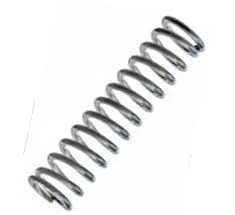
- Mobile Phone
- +8613931874955
- sales@cntcmetal.com
Inspection Procedures for Cavity Wall Ties in Building Construction and Maintenance
Cavity Wall Tie Inspection Importance and Procedures
Cavity wall construction has become one of the most popular methods in modern building practices. This type of wall construction involves two layers of masonry separated by a cavity, providing enhanced insulation and moisture control. However, the effective performance of cavity walls is significantly influenced by the presence and condition of wall ties. These ties help connect the outer and inner leaves of the wall, maintaining structural integrity and preventing buckling or separation. Therefore, regular cavity wall tie inspections are essential for both safety and longevity of the building.
Importance of Cavity Wall Tie Inspection
1. Structural Integrity Wall ties play a crucial role in maintaining the structural stability of cavity walls. Over time, these ties can corrode, deteriorate, or even break due to various environmental factors. Regular inspections help in identifying compromised ties, thereby preventing potential structural failures.
2. Moisture Control Cavity walls are designed to manage moisture, keeping the internal environment dry. Damaged or corroded ties can affect the wall's ability to control moisture, leading to dampness, mold, and even structural damage over time. Inspections help ensure that the ties are performing their intended function.
3. Safety Concerns A wall tie failure can pose safety risks, especially in areas with high wind loads or seismic activity. Ensuring the ties are in good condition is crucial for the safety of occupants and the surrounding environment.
4. Cost-Effectiveness Early detection of issues related to wall ties can save significant repair costs in the long run. If problems are identified early, addressing them can often be a straightforward and less expensive process compared to the extensive repairs required if the issues are left unaddressed.
Procedures for Cavity Wall Tie Inspection
cavity wall tie inspection

Inspecting cavity wall ties requires a systematic approach to ensure thorough evaluation. Below are the key procedures involved
1. Visual Inspection The first step is to conduct a visual inspection of the accessible areas of the wall. Look for visible signs of deterioration, such as rust or corrosion on the ties, cracks in the masonry, or gaps forming between the inner and outer walls. Pay attention to areas where water pooling or dampness is observed, as these may indicate compromised wall ties.
2. Using Technology Advancements in technology have made it possible to conduct more thorough inspections without invasive measures. Techniques such as endoscopic inspections allow for viewing the cavity within the wall. Additionally, moisture meters can be employed to assess areas where moisture might be affecting the integrity of the wall ties.
3. Assessment of Tie Types Different types of wall ties can have varying lifespans and performance characteristics. It's important to identify the type of ties used during construction. Some older ties, such as those made of mild steel, may be more prone to corrosion, while stainless steel options offer better longevity. Understanding the materials involved helps prioritize inspection frequencies.
4. Documentation Keeping accurate records of the inspection findings is essential for monitoring the health of wall ties over time. This documentation should include notes on the condition of the ties, any recommended maintenance or repairs, and the time frames for follow-up inspections.
5. Professional Assessment While homeowners can perform initial inspections, involving a professional surveyor or building inspector is often beneficial. These professionals have the expertise and tools necessary to conduct more comprehensive evaluations and recommend the best course of action if issues are found.
Conclusion
Cavity wall tie inspection is a critical aspect of maintaining the integrity and performance of cavity wall structures. As buildings age, the condition of wall ties can significantly affect both safety and comfort within the living environment. By conducting regular inspections, employing modern technology, and keeping detailed records, property owners can ensure their buildings remain safe, dry, and structurally sound for years to come. Investing in proper maintenance today will pay off in both safety and cost savings in the future.
share:
-
Why Sacrificial Formwork Is Redefining Underground ConstructionNewsJun.06,2025
-
The Structural Dynamics of Modern Concrete: How Snake Spacers Revolutionize Flexible ReinforcementNewsJun.06,2025
-
Snake Spacers Smart-Lock Concrete Reinforcement with Surgical PrecisionNewsJun.06,2025
-
Snake Spacers: Reinforcement Precision for Modern Concrete ProjectsNewsJun.06,2025
-
Snake Spacers Powering Concrete's Structural DNANewsJun.06,2025
-
Slither into Success: Snake Spacers' Precision Bite for Unbreakable ReinforcementNewsJun.06,2025
-
Sacrificial Formwork: Building Stronger, Faster, and Safer StructuresNewsJun.06,2025



















